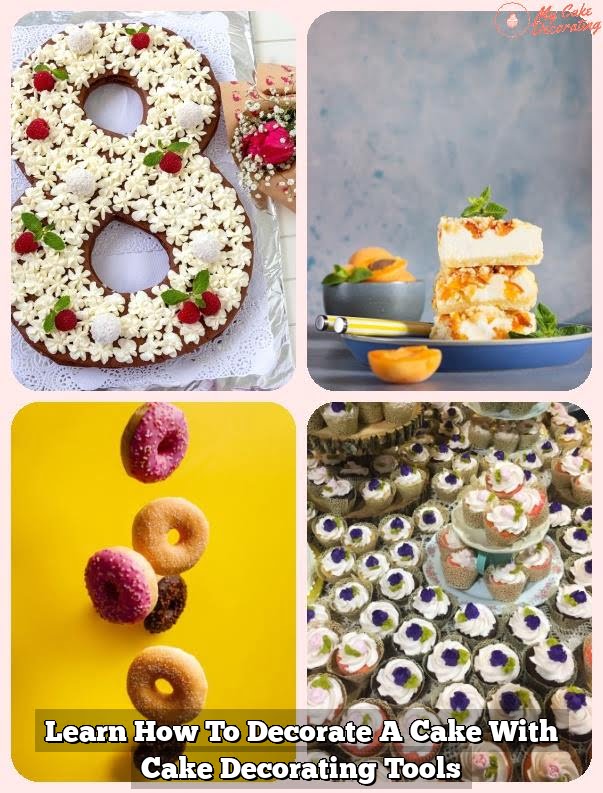Are you looking to add a touch of creativity and elegance to your next special occasion? If so, learning how to decorate a pillow cake may be just the thing for you. A pillow cake is a unique and eye-catching dessert that is becoming increasingly popular for weddings, birthdays, and other celebrations. In this article, we will explore what exactly a pillow cake is and why it has become such a sought-after choice for special events.
Pillow cakes are named for their resemblance to a fluffy, plump pillow – making them an ideal choice for romantic or whimsical occasions. With their soft, rounded edges and comfortable appearance, they offer a delightful way to showcase your baking skills while adding an element of charm to any dessert table.
As we delve into the world of pillow cakes, we will also cover the various aspects of creating these delightful confections – from selecting the right shape and size, to baking the perfect cake, all the way through to troubleshooting common issues that may arise during the decorating process.
Whether you are an experienced baker looking to expand your repertoire or someone who is new to the art of cake decorating, this article will provide you with everything you need to know in order to create a stunning pillow cake that will impress your guests and leave them wanting more. So let’s dive in and discover what makes pillow cakes so special.
Selecting the Right Pillow Cake Shape
When it comes to decorating a pillow cake, choosing the right shape and size is essential to achieving a stunning result. There are several factors to consider when selecting the perfect pillow cake shape, from the occasion it’s intended for to personal preferences and skill level.
Occasion and Theme
The first step in selecting the right pillow cake shape is considering the occasion and theme of the event. A square pillow cake shape may be more suitable for formal events such as weddings or anniversaries, while a round or heart-shaped pillow cake would be ideal for a birthday or Valentine’s Day celebration. Consider the color scheme and overall aesthetic of the event when choosing your cake shape.
Size Matters
The size of your pillow cake should also be carefully chosen based on the number of guests and serving portions needed. It’s important to keep in mind that pillow cakes tend to be taller than regular cakes, so factor in both width and height when determining the size. Additionally, consider whether you’ll be adding multiple tiers to your pillow cake design, as this will impact the overall dimensions.
Skill Level
Lastly, consider your own skill level when choosing a pillow cake shape. While intricate shapes can make for an impressive display, they also require more expertise in both baking and decorating. If you’re new to decorating pillow cakes, starting with a simpler shape such as a square or round may be more manageable until you gain confidence in your skills.
By keeping these tips in mind, you can confidently select the right shape and size for your pillow cake, ensuring that it not only looks stunning but also suits the occasion perfectly. In the next section, we will explore step-by-step instructions on how to bake a delicious and moist pillow cake that serves as the perfect canvas for your decorative designs.
Baking the Perfect Pillow Cake
Baking a pillow cake may seem intimidating, but with the right tools and techniques, you can easily achieve a delicious and moist result. Below are step-by-step instructions on how to bake the perfect pillow cake for any special occasion.
Preparation and Ingredients
Before you begin baking your pillow cake, it is essential to gather all the necessary ingredients and preheat your oven to the recommended temperature. For a basic pillow cake, you will need flour, sugar, butter, eggs, baking powder, milk, and vanilla extract. You can also add food coloring or flavored extracts for a more customized touch.
Mixing and Baking
Start by creaming together the butter and sugar until light and fluffy. Gradually add in the eggs one at a time, mixing well after each addition. In a separate bowl, combine the dry ingredients (flour and baking powder) before adding them to the wet mixture alternately with the milk. Be sure not to overmix the batter to prevent it from becoming tough.
Once your batter is ready, pour it into greased and floured pillow cake pans, making sure they are evenly filled. Bake in the preheated oven for about 25-30 minutes or until a toothpick inserted into the center comes out clean. Allow the cakes to cool in their pans for 10-15 minutes before transferring them to wire racks to cool completely.
Leveling and Trimming
After your pillow cake layers have cooled, use a serrated knife or cake leveler to trim any domed tops and ensure that each layer is flat and even. This step will help create a stable base for stacking multiple layers as well as provide a level surface for frosting and decorating.
Following these step-by-step instructions will guarantee that you bake a delicious and moist pillow cake that serves as an excellent canvas for your decorative creativity when assembling and decorating your pillow cake using fondant or other techniques.
Remember that every baker’s journey is unique so don’t hesitate to experiment with different recipes or flavors until you discover what works best for you.
Crumb Coating and Frosting the Cake
After baking a delicious and moist pillow cake, the next step is to crumb coat and frost the cake to achieve a smooth and beautiful finish. Crumb coating is an essential step in creating a flawless final look for your cake.
This process involves applying a thin layer of frosting to seal in any loose crumbs on the cake’s surface. The crumb coat provides a smooth foundation for the final layer of frosting and prevents any crumbs from showing through.
To crumb coat the pillow cake, start by placing a dollop of frosting on top of the cake and spreading it evenly across the surface with an offset spatula. Next, apply a thin layer of frosting around the sides of the cake, ensuring that it covers the entire surface.
Once the entire cake is covered with frosting, use the edge of the spatula to smooth out any excess frosting and create an even layer. Refrigerate the crumb-coated cake for about 30 minutes to allow the frosting to set before applying the final layer of frosting.
When it comes to frosting the pillow cake, there are various techniques and recommendations for achieving a smooth and beautiful finish. One popular method is to use an offset spatula to apply a thick layer of frosting onto the chilled crumb-coated cake. Start by covering the top of the cake with frosting, then move on to evenly coating the sides with a generous amount of frosting.
Use long strokes with your spatula to smoothen out any uneven areas and create a seamless finish. It’s important to take your time and work patiently to achieve an even distribution of frosting around all edges and corners of your pillow cake.
Achieving a smooth and beautiful finish when decorating a pillow cake involves attention to detail, patience, and precision technique. By following these tips for crumb coating and frosting your pillow cake, you’ll be well on your way to creating a stunning centerpiece for your special occasion dessert table.
Decorating With Fondant
When it comes to decorating a pillow cake, using fondant is a popular choice for achieving a clean and professional finish. Follow these step-by-step instructions on how to cover a pillow cake with fondant and achieve sharp edges for a beautiful presentation.
Materials Needed
- Prepared pillow-shaped cake
- Buttercream frosting
- Fondant (in desired color)
- Confectioner’s sugar (for dusting)
- Fondant smoother
- Rolling pin
- Pizza cutter or sharp knife
Step 1: Prep the Cake
Start by crumb coating the cake with a thin layer of buttercream frosting to ensure that the fondant adheres smoothly. After applying the crumb coat, refrigerate the cake for about 20 minutes to allow the frosting to set.
Step 2: Roll Out the Fondant
Next, roll out the fondant on a surface dusted with confectioner’s sugar to prevent sticking. Roll the fondant into a large enough piece to cover the entire pillow cake, plus some extra for draping over the edges.
Step 3: Drape and Smooth
Carefully drape the rolled-out fondant over the chilled cake and gently smooth it over the top and sides using a fondant smoother. Use your hands to press out any air bubbles or wrinkles as you go.
By following these step-by-step instructions, you can cover your pillow cake with fondant and achieve crisp, clean edges for an elegant finish. Experiment with different colors and textures of fondant to create unique designs that will impress your friends and family at your next special occasion.
Adding Details and Accents
Adding decorative elements to your pillow cake is a fun and creative way to make it truly stand out. Whether you’re making a pillow cake for a wedding, birthday, or any other special occasion, adding details and accents can take your cake to the next level. Here are some creative ideas for adding decorative elements to your pillow cake.
One popular option for decorating a pillow cake is to add bows made out of fondant or gum paste. These can be placed at the corners of the cake or in the center to create an elegant and whimsical look. If you’re feeling adventurous, you can even try creating 3D bows that stand up from the top of the cake for a unique touch.
Another beautiful way to decorate a pillow cake is with edible flowers. You can use flower-shaped cookie cutters to make fondant flowers in various colors and sizes, then arrange them on top of the cake for a stunning and delicate look. Edible flowers can also be made by hand using flower formers and petal dust for added detail and realism.
If you want to add a pop of color and creativity to your pillow cake, consider using edible paint. With edible food coloring gels or airbrush colors, you can paint intricate designs or patterns directly onto the fondant covering your cake. This allows for endless customization and personalization, making your pillow cake truly one-of-a-kind.
These creative ideas will help take your pillow cake decorating skills to new heights. By adding bows, flowers, or edible paint, you can transform a basic pillow-shaped cake into a stunning centerpiece that will impress all of your guests at your next special event.
| Idea | Description |
|---|---|
| Bows | Use fondant or gum paste to create elegant 3D bows or small corner accents. |
| Flowers | Create edible flowers with fondant in different shapes and colors as beautiful embellishments. |
| Edible Paint | Add intricate designs directly onto the fondant covering using edible food coloring gels or airbrush colors. |
Tips for Transporting and Storing
Transporting and storing a decorated pillow cake requires special care to ensure that all your hard work stays intact. Once your pillow cake is beautifully decorated, you want to make sure it arrives at its destination in one piece. Whether you are transporting the cake to a party venue or simply need to store it overnight, here are some precautions and advice for transporting and storing a decorated pillow cake safely.
Firstly, when transporting a decorated pillow cake, it’s essential to keep it level to prevent any decorative elements from shifting or falling off during transit. For this reason, investing in a sturdy cake carrier with a flat surface can be incredibly helpful. Alternatively, placing non-slip mats on the floor of your car can help prevent the cake from sliding around during transportation.
Additionally, extreme temperatures can wreak havoc on a decorated pillow cake. If you’re transporting the cake in hot weather, be sure to keep the car air-conditioned and avoid direct sunlight. On the other hand, if you’re dealing with cold temperatures, take care to protect the cake from freezing by ensuring it is properly wrapped and insulated during transportation.
Lastly, when it comes to storing a decorated pillow cake, it’s important to find the right balance between protecting the decorations and preserving the freshness of the cake itself. To achieve this balance, place the cake in an airtight container or wrap it carefully with plastic wrap before refrigerating it. However, if your cake has perishable fillings or dairy-based frosting, be mindful of how long you store it as prolonged refrigeration can affect its taste and texture.
| Transporting Precautions | Storage Advice |
|---|---|
| Keep Cake Level During Transit | Use Airtight Container or Plastic Wrap |
| Avoid Extreme Temperatures | Mindful of Prolonged Refrigeration for Perishable Cake Fillings |
Troubleshooting Common Issues
When it comes to decorating a pillow cake, there are some common issues that may arise during the process. One of the most common problems is air bubbles forming between the fondant and the cake, which can create an uneven and bumpy appearance. To fix this issue, you can use a fondant smoother to gently press out any air bubbles, or use a pin to carefully puncture the bubble and smooth it out.
Another common problem when decorating a pillow cake is achieving sharp edges with the fondant. If the edges are not crisp and clean, it can detract from the overall appearance of the cake. To fix this issue, make sure to trim off any excess fondant before smoothing down the edges with your fingertips. You can also use a sharp knife or pizza cutter to achieve precise edges.
Additionally, if you find that your frosting is not adhering properly to the cake or if it starts to slide off, it could be due to a lack of crumb coating. Crumb coating is an important step in preparing the cake for frosting as it seals in any loose crumbs and provides a smooth surface for the frosting to adhere to.
To fix this issue, apply a thin layer of frosting all over the cake before adding your final layer of frosting.
By being aware of these common issues and knowing how to address them, you can ensure that your pillow cake turns out looking flawless and professional. With attention to detail and a little troubleshooting, you’ll be able to decorate a stunning pillow cake that’s sure to impress at any special occasion.
Conclusion
In conclusion, learning how to decorate a pillow cake can be a fun and rewarding experience for anyone with a passion for baking and creativity. The key to success lies in selecting the right shape and size, baking it to perfection, mastering the art of frosting and fondant application, adding personalized details, and ensuring safe transportation and storage.
By following the step-by-step instructions in this article, you can feel confident in your ability to create a stunning pillow cake for any special occasion.
Remember, the beauty of decorating a pillow cake lies in the endless possibilities for customization. Whether you want to create an elegant design for a wedding or a playful theme for a birthday celebration, there are no limits to what you can achieve with a little imagination.
So why not put your skills to the test and try your hand at decorating your own pillow cake? With the tips and techniques provided here, you will be well-equipped to tackle any decorating challenge with confidence.
Lastly, don’t be discouraged by any potential setbacks along the way. Even if you encounter common issues such as uneven frosting or air bubbles in your fondant, there are simple solutions to troubleshoot these problems and achieve a flawless finish. With practice and patience, you’ll soon become proficient in the art of decorating pillow cakes. So go ahead and unleash your creativity – your masterpiece awaits.

Welcome to my blog about home and family. This blog is a place where I will share my thoughts, ideas, and experiences related to these important topics. I am a stay-at-home mom with two young children. I hope you enjoy reading it! and may find some helpful tips and ideas that will make your home and family life even better!





